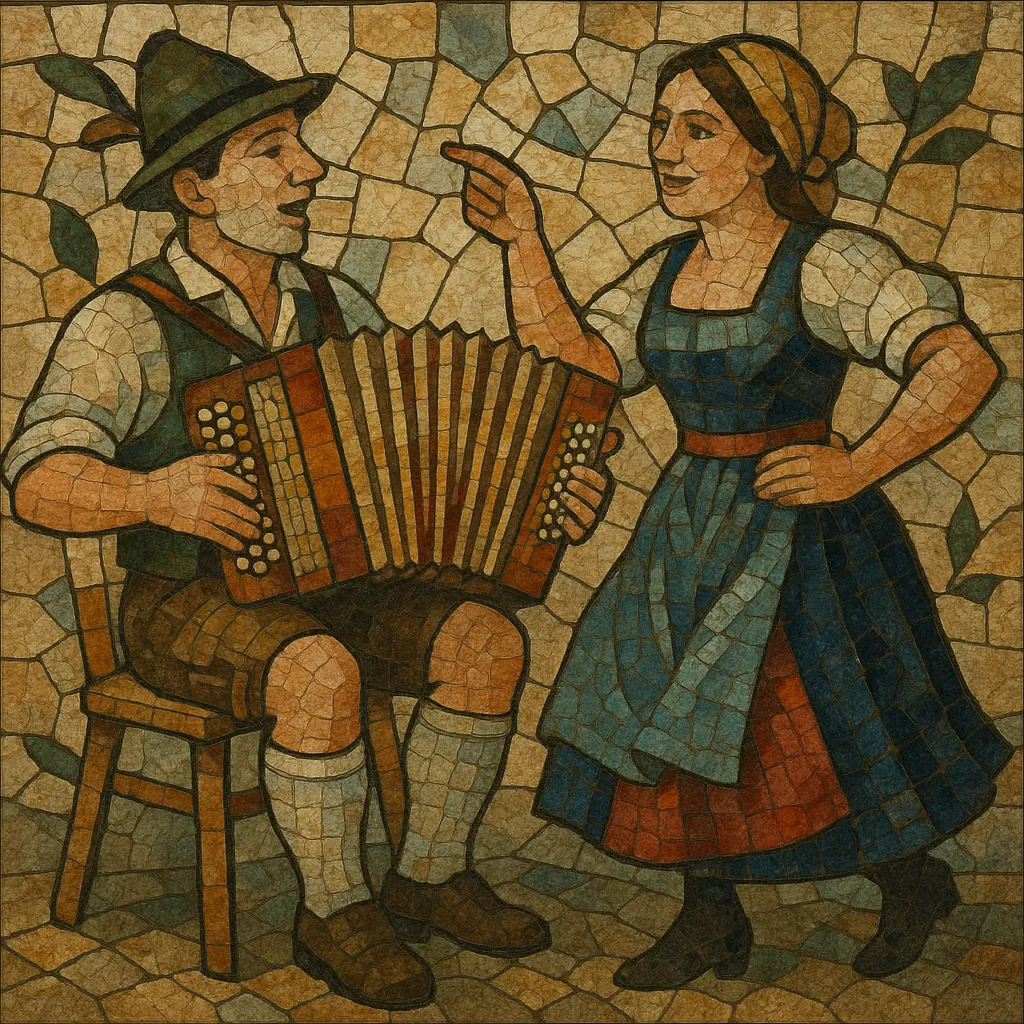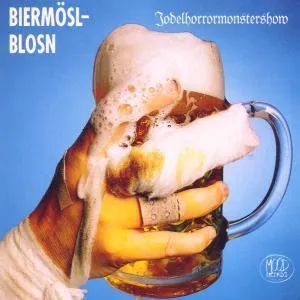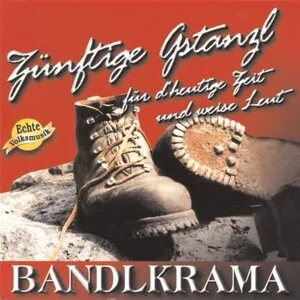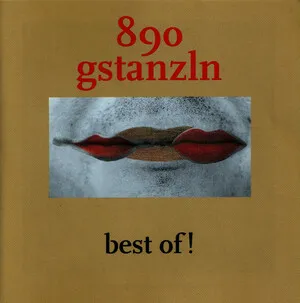Gstanzl is an improvised, humorous Alpine song form consisting of short, witty four-line stanzas sung in Bavarian–Austrian dialects.
It thrives at village dances, taverns, and festivals, where singers deliver playful teasing, social satire, flirtation, and local commentary over familiar folk-dance tunes. Performers often insert yodel refrains and engage in friendly "dueling" exchanges of verses.
Musically, Gstanzl rides on simple, catchy melodies—often related to Ländler, polka, or waltz rhythms—accompanied by accordion (Steirische Harmonika), zither, guitar, or small brass/strings. The punchline typically lands in the final line, and the best singers are prized for sharp wordplay, timing, and crowd rapport.
Gstanzl emerged in the Alpine regions of present-day Austria and Bavaria during the 1800s, growing out of rural dance culture and oral poetic traditions. At weddings, fairs, and taverns, local singers would improvise short stanzas to well-known dance tunes, poking fun at friends, rivals, and community happenings. Closely related forms include the Bavarian/Upper Austrian Schnadahüpfl and other quatrain-based folk verse forms.
By the late 19th and early 20th centuries, Gstanzl-singing was firmly embedded in local festivities, with singers trading verses in playful “duels.” The style relied on dialect, topical humor, and crowd interaction, often with yodel interludes between stanzas. Instruments such as the Steirische Harmonika (diatonic button accordion), zither, guitar, fiddle, and clarinet supported the dance feel (Ländler, polka, waltz).
Folk collectors, regional broadcasters, and folkloric ensembles began documenting Gstanzl in the 20th century, helping preserve regional variants. Postwar cultural festivals and radio/TV programs in Austria and Bavaria kept the tradition visible, even as urbanization changed rural life.
In recent decades, Gstanzl persists at local fests and folk gatherings while also inspiring hybrid acts that fuse dialect verse with rock, punk, or electronic elements. Modern performers retain the core: improvisation, dialect wit, call-and-response energy, and a danceable folk backbone.





